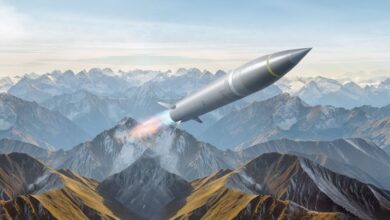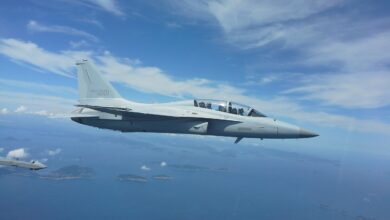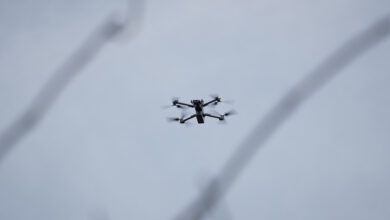General Atomics and Boeing subsidiary Aurora Flight Sciences have been awarded contracts to design a seaborne strategic and tactical lift aircraft.
Dubbed the Liberty Lifter, the seaplane must be capable of flying less than 100 feet (30 meters) off the ground and carrying up to 90 tons of cargo.
It must also travel at speeds faster than existing sea lift platforms, and perform takeoff and landing in sea state 4 with waves more than 2.5 meters (8.2 feet) high.
Designs
According to program manager Christopher Kent, the two teams selected for the Liberty Lifter contract offer “distinctly different design approaches.”
General Atomics has pitched a twin-hull, mid-wing design that reportedly optimizes on-water stability and has twelve turboshaft engines for distributed propulsion.

Meanwhile, Aurora Flight Sciences’ design resembles a traditional flying boat that has a single hull, high wing, and eight turboprops.
Both aviation firms will be given a total of 15 months to conceptualize and mature their designs.
An additional three months will also be allotted for manufacturing, planning, and testing seaplane demonstrators.
“We are excited to kick off this program and looking forward to working closely with both performer teams as they mature their point-of-departure design concepts through Phase 1,” program manager Kent said.

The Next Phase
The Defense Advanced Research Projects Agency plans to begin the second phase of the Liberty Lifter program in mid-2024.
Vendors will continue the detailed design, manufacturing, and demonstration of a full-scale Liberty Lifter X-Plane.
The agency also aims to collaborate with international partners to help develop the seaplane and eventually make it an operational vehicle.












